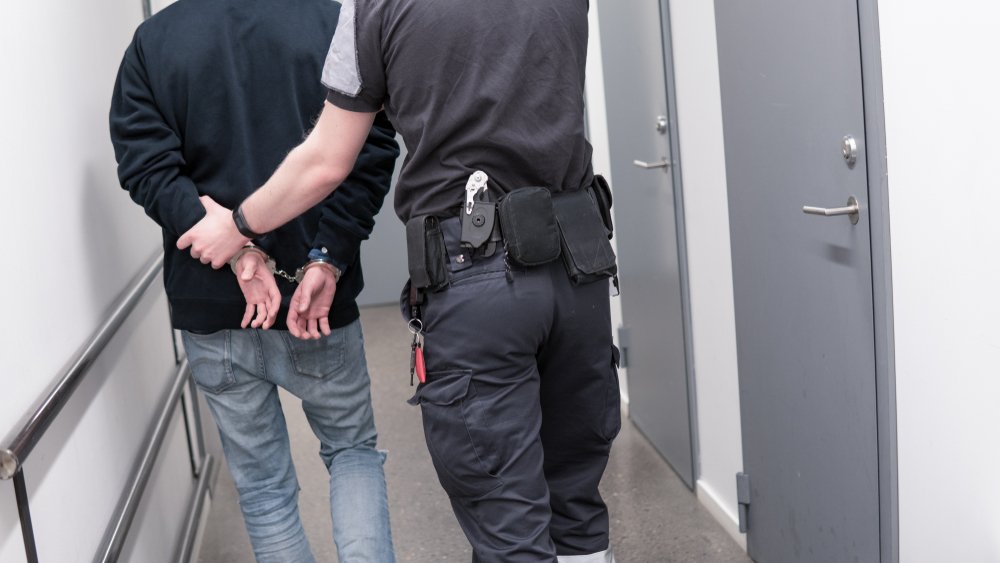“Prescription fraud” in California is a crime that can be committed by either patients or health care professionals. Patients commit the offense and violate Health & Safety Code 11173 HS when they obtain or attempt to obtain a prescription for a controlled substance through some type of fraud or misrepresentation. The crime is often referred to as “doctor shopping.”
Health care providers commit the offense and violate Health & Safety Code 11153 HS when they write prescriptions for controlled substances that are not issued for legitimate purposes.
Note that a “controlled substance” means any substance listed on the five classification schedules of federal and California drug laws.1 Some common controlled substances that are often involved in prescription fraud cases include:
- Hydrocodone (Vicodin),
- Oxycodone or Oxycontin,
- Xanax, and
- Valium
Examples
- having a friend see a doctor and pretend to be suffering from chronic back pain to get a prescription for Vicodin.
- visiting several different primary care providers and attempting to obtain prescriptions for codeine from all of them.
- a doctor writing prescriptions and refills “no questions asked” for a flat fee per prescription.
Defenses
Patients and doctors accused of prescription fraud can challenge an accusation with a legal defense. Three common defenses include you showing that:
- you did not use fraud or deceit to obtain a prescription,
- you did not knowingly write a prescription for a non-legitimate purpose, and
- you were entrapped.
Penalties
Violations of HS 11173 and HS 11153 are wobbler offenses, meaning a prosecutor can charge the crimes as either
- a misdemeanor or
- a felony.
While misdemeanor prescription fraud is punishable by up to one year in county jail, felony prescription fraud is punishable by up to three years in jail.
Our California criminal defense attorneys will highlight the following in this article:
- 1. What are the California laws on prescription fraud?
- 2. Are there common defenses to prescription fraud charges?
- 3. What are the penalties?
- 4. Are there related offenses?

Prescription fraud is a California crime that can be committed by either patients or health care professionals.
1. What are the California laws on prescription fraud?
California has two primary laws that prosecutors can use to file charges regarding prescription drug fraud. These are:
- Health & Safety Code 11173 HS, and
- Health & Safety Code 11153 HS.
1.1. Doctor shopping – HS 11173
Under California’s doctor shopping laws, patients commit the crime of doctor shopping or prescription fraud if they obtain or attempt to obtain a prescription medication or a prescription for a controlled substance through:
- fraud, deceit, misrepresentation, or subterfuge, or
- the concealment of a material fact.2
For purposes of this statute, fraud is the act of:
- knowingly misrepresenting the truth, or concealing a material fact, and
- doing so in order to get another person to act in a way that harms his/her interests.3
1.2. Prescription fraud by doctors – HS 11153
Medical professionals commit prescription fraud when they knowingly write a prescription for a controlled substance that:
- is not issued for a legitimate medical purpose, and/or
- is not issued in the usual course of their professional practice.4
“Medical professionals” include those prescribers/providers you normally associate with completing prescription forms. Examples include:
- doctors,
- dentists,
- nurse practitioners, and
- pharmacists.
California courts have also said that “medical professionals” include unlicensed medical assistants.5

A skilled attorney can provide the essential legal defense to fight a physician shopping charge.
2. Are there common defenses to prescription drug charges?
Yes. Criminal defense attorneys draw upon several legal strategies when defending clients in these cases. Three common ones involve attorneys showing that:
- there was no fraud or deceit,
- you lacked criminal intent, and
- you were entrapped.
2.1. No fraud or deceit
Doctor shoppers are only guilty of prescription fraud if they used some type of fraud or deceit in obtaining a prescription. Further, “fraud” has a precise legal definition. A defense then, is for you to show that you did not actually use fraud in obtaining a prescription for a medical condition.
For example, maybe a prescribing doctor wrote you a prescription for some painkillers quickly and without asking many questions.
2.2. Lack of intent
When it comes to doctors committing prescription fraud, they can always use the defense that they lacked criminal intent. They can show this by asserting that they did not knowingly write a non-legitimate prescription. Maybe, for example, a physician wrote an inaccurate prescription out of carelessness instead of doing so purposefully.
2.3. Entrapment
People are often charged with prescription fraud after an undercover sting by law enforcement officers. In these situations, an officer may try and entrap, or lure a suspect into committing a crime. If so, the suspect can raise an entrapment defense. This is provided that he/she only committed a crime because of the luring or overbearing conduct by the officer.

Violations of HS 11173 and HS 11153 can result in fines and/or jail time.
3. What are the penalties?
Violations of both HS 11173 and HS 11153 are wobbler offenses. A prosecutor can charge a wobbler as either a misdemeanor or a felony depending on:
- the facts of the case, and
- your criminal record.
Misdemeanor prescription fraud is punishable by:
- misdemeanor (summary) probation,
- up to one year in county jail, and/or
- a maximum fine of $1,000.6
Felony prescription fraud is punishable by:
- felony (formal) probation,
- up to three years in jail, and/or
- a maximum fine of $20,000).7
Note that California’s prescription drug fraud laws are not covered by the state’s drug diversion program or California Proposition 36. This means that these programs, which provide for court-supervised drug treatment for drug abusers, are not available to people convicted under either HS 11173 or HS 11153.8
4. Are there related offenses?
There are three crimes related to prescription fraud. These are:
- forging or altering a prescription – HS 11368,
- possession of a controlled substance – HS 11350, and
- counterfeiting a prescription pad – HS 11162.5.
4.1. Forging or altering a prescription – HS 11368
Per Health & Safety Code 11368, forging a prescription is the crime where you:
- forge a prescription for narcotic drugs,
- use a prescription with a forged signature to get or attempt to get a narcotic.
Note that while prescription fraud involves controlled substances, HS 11368 is limited to narcotic drugs. Examples include:
- Opium,
- Morphine,
- Codeine, and
- Demerol.
4.2. Possession of a controlled substance – HS 11350
Under Health & Safety Code 11350, possession of a controlled substance is the crime where you:
- possess a controlled substance, and
- do so without a lawful prescription.
Unlike with prescription fraud, prosecutors usually charge possession of a controlled substance as a misdemeanor (and not either a misdemeanor or a felony).
4.3. Counterfeiting a prescription pad – HS 11162.5
Per Health & Safety Code 11162.5, counterfeiting a prescription pad is the crime where you make or possess counterfeit prescription blanks for a controlled substance.
As with prescription fraud charges, you can challenge charges under this statute with the defense of:
- no criminal intent, and
- entrapment.
For additional help…

Call us for additional help.
For additional guidance or to discuss your case with a criminal defense lawyer, we invite you to contact our law firm at the Shouse Law Group. Our attorneys provide both free consultations and legal advice you can trust.
Legal References:
- See Health & Safety Code 11007 HS – Controlled substance.
- Health & Safety Code 11173 HS. See also People v. Eroshevich (2013), 214 Cal. App. 4th 1335; and, People v. Meyer (1963), 216 Cal. App.2d 618.
- Black’s Law Dictionary (9th ed. 2009).
- California Health & Safety Code 11153 HS.
- People v. Gandotra (1992), 11 Cal. App. 4th 1355.
- California Health & Safety Code 11173 HS.
- California Health & Safety Code 11153. See also California Penal Code 1170h PC.
- See, for example, California Penal Code 1000 PC.
